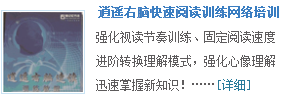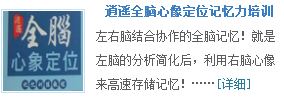(1) 信头。信头包括两项:写信人的地址和写信日期,通常写在信纸的右上角。先写地址,后写日期。地址的写法与信封地址的写法相同,也是先小后大,每行采用齐头式(顶格写)或缩进式。日期的写法,应紧接在写信人地址的下一行,不能像写中文书信那样,写在写的最后。顺序与日记日期的写法一样。
(2) 信内地址。信内地址是指收信人的姓名和地址。与写信人的地址、姓名相隔两行,写在左上角。先写姓名,后写地址,地址的写法与写信人地址的写法相同。在收信人的姓名前往往加上尊称或头衔,如, Mrs., Miss, Doctor, Professor等等。在私人书信中,我们通常不写信内地址。
(3) 称呼。称呼是指写信人对收信人的称呼。与收信人的姓名、地址相隔一行,与上面对齐。从左边顶格写,占一行。称呼一般用Dear或My dear开始,以逗号“,”结束。如果姓前要加称谓或职位的话,男性用Mr.;女性用Miss(未婚),Mrs.(已婚),Ms(不知婚否)。职位也可用Doctor, Professor,Comrade等。如果给自己熟悉的朋友或小辈写信,可写为Dear / My dear+姓名。如:Dear Mrs. Smith, / My dear Xiao Ming, / My dear daughter, / Dear Dr. Wang等。
(4) 正文。正文是书信的主要部分。正文一般从称呼下隔一行开始写,每段开头仍内缩四个字母大小的空隙。如果是给不熟悉的人写信的话,一般要先进行自我介绍,反之,则可直接进入正题。要写好一封书信,开头语是正文的一个不可缺少的组成部分。写信时,如果忽视开头语,只重视写提示的要点内容的话,写出来的文章就会缺乏连贯性和可读性。写信时常用的开头语有:
I’m writing to tell you about…
I have the pleasure to tell you that…
We're so glad that you… Here is how…
My name is Li Hua. I…
I’m very much delighted to inform you that…
I’m sorry to tell you / to say…
Than you for telling me about…
I apologize for not writing to you for a long time…
I’m very happy to hear of your success
I’m very happy to hear that you are all enjoying good health.
I’m sorry I’ve been so slow in answering your letter.
I must apologize for my delay in answering your letter.
I was very surprised to get your letter yesterday.
I’m very glad to hear from you again.
It was good to hear from you and I shall be very pleased to let you have the information you need.
I’m very pleased to hear that everything is going so well with you.
We have enjoyed hearing from you.
As I have not received your letter for long, I feel anxious.等等。
正文要求语言准确,能表情达意,行文流畅。
(5) 结束语。结束语相当于中文书信的客套话。这些结束语写在正文的左下方,另起一行。常用的结束语有:
Best wishes!
Gook luck to you!
Wish you success!
Give my regards / best wishes / love to…!
I’m looking forward to hearing from you!
Hope to hear from you soon!
Thanks again for writing about…
I hope to hear more news about…
Take cake of yourself!
I’m looking forward to your early reply.
Please remember to your family.
Do please write and let me know how you are getting on.
I hope to see you soon, and tell you …
Best wishes for your health and every happiness!
I hope you and your family are very well.
As the season grows colder, I hope you will take care of yourself.
Dou you think you like it better, if not, just let me know.
Thank you for any help you can give me. 等等。
(6) 结尾谦称。英文书信末尾的谦称,一般写在结束语的下方,相隔1-2行,从信纸中央偏右的地方。开头字母要大写,末尾用逗号“,”。常用的谦称语有:Affectionately yours, / Yours affectionately, / Yours ever, / Ever yours, / Livingly yours, / Yours lovingly, / Yours, / Yours truly, / Truly yours, / Respectfully yours, / Yours respectfully, 等等。
(7) 签名。签名是指写信人的姓名。写在谦称下面,另起以行。在私人信件中一般不需要签全名,手写体即可。在商务信件中为了使人看得清楚,则在亲笔写的全名的下方,可打印出姓名。
本文来自:逍遥右脑记忆 http://www.jiyifa.com/gaozhong/260471.html
相关阅读:通过听英文歌曲轻松提高英语听力的方法



